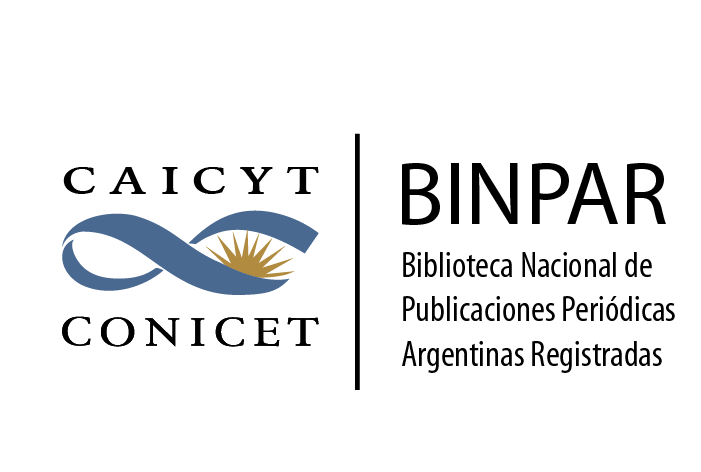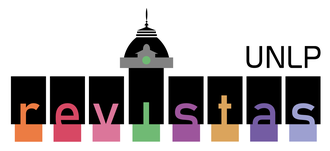Estudio de diferentes parametrizaciones de actividad eléctrica y su evaluación con observaciones del GLM
DOI:
https://doi.org/10.24215/1850468Xe036Palabras clave:
parametrización, actividad eléctrica, GLM, WRFResumen
El pronóstico de actividad eléctrica es de vital importancia para muchas actividades y la seguridad de las personas. Dicho pronóstico no es sencillo debido a que es un proceso que ocurre a escalas que no son resueltas por los modelos meteorológicos. Por este motivo, el presente trabajo evalúa el desempeño de cinco parametrizaciones aplicadas al modelo WRF con convección permitida. Para generar y evaluar las parametrizaciones se utilizaron los pronósticos determinísticos y por ensamble del Sistema de Asimilación y Pronóstico del Servicio Meteorológico Nacional (SAP.SMN) y las observaciones del sensor GLM entre noviembre de 2022 y abril de 2023. Se encontró que todas las parametrizaciones logran representar de manera correcta distintas características de las descargas observadas durante el período analizado, siendo la que se basa en el contenido de hielo integrado en la vertical, la que brinda los mejores resultados. Se observó además una sensibilidad a la parametrización de la microfísica empleada en el modelo, no así con la parametrización de la capa límite.
Descargas
Citas
Allen, B. J., E. R. Mansell, D. C. Dowell, y W. Deierling, 2016: Assimilation of Pseudo-GLM Data Using the Ensemble Kalman Filter. Mon. Wea. Rev., 144, 3465–3486, https://doi.org/10.1175/MWR-D-16-0117.1.
Ashley, W. S., y C. W. Gilson, 2009: A Reassessment of U.S. Lightning Mortality. Bull. Amer. Meteor. Soc., 90, 1501–1518, https://doi.org/10.1175/2009BAMS2765.1
Bertone, F., Nicora, G., y Vidal, L., 2022: Thunderstorm days over Argentina: Integration between human observations of thunder and the world wide lightning location network lightning data, International Journal of Climatology, 42(16), 9072-9087, https://doi.org/10.1002/joc.7800
Bruning, E. C., Tillier, C. E., Edgington, S. F., Rudlosky, S. D., Zajic, J., Gravelle, C., Foster, M., Calhoun, K., Campbell, A., Stano, G., Schultz, C., y Meyer, T. C., 2019: Meteorological imagery for the geostationary lightning mapper, Journal of Geophysical Research: Atmospheres, 124(24), 14285-14309, https://doi.org/10.1029/2019JD030874
Chen, S.-H. y W.-Y. Sun, 2002: A one-dimensional time dependent cloud model. J. Meteor. Soc. Japan., 80(1), 99–118, https://doi.org/10.2151/jmsj.80.99
Cintineo, J. L., M. J. Pavolonis, y J. M. Sieglaff, 2022: ProbSevere LightningCast: A Deep-Learning Model for Satellite-Based Lightning Nowcasting. Wea. Forecasting, 37, 1239–1257, https://doi.org/10.1175/WAF-D-22-0019.1
Combarnous, P., Erdmann, F., Caumont, O., Defer, É., y Martet, M. 2022: A satellite lightning observation operator for storm-scale numerical weather prediction. Natural Hazards and Earth System Sciences, 22(9), 2943-2962, https://doi.org/10.5194/nhess-22-2943-2022
Federico, S., Torcasio, R.C., Puca, S., Vulpiani, G., Comellas Prat, A., Dietrich, S., Avolio, E., 2021: Impact of Radar Reflectivity and Lightning Data Assimilation on the Rainfall Forecast and Predictability of a Summer Convective Thunderstorm in Southern Italy. Atmosphere, 12, 958. https://doi.org/10.3390/atmos12080958
Fierro, A. O., Mansell, E. R., MacGorman, D. R., y Ziegler, C. L., 2013: The implementation of an explicit charging and discharge lightning scheme within the WRF-ARW model:Benchmark simulations of a continental squall line, a tropical cyclone, and a winter storm. Monthly Weather Review, 141(7), 2390-2415, https://doi.org/10.1175/MWR-D-12-00278.1
Goodman, S, Blakeslee, R., Koshak, W., Mach, D., Bailey, J., Buechler, D., Carey, L., Schultz, C., Bateman, M., McCaul, E. y Stano, G., 2013: The GOES-R Geostationary Lightning Mapper (GLM). Atmos. Res., 125–126, 34–49, https://doi.org/10.1016/j.atmosres.2013.01.006.
Hong, S. Y., y Lim, J. O. J., 2006: The WRF single-moment 6-class microphysics scheme (WSM6). Asia-Pacific Journal of Atmospheric Sciences, 42(2), 129-151.
Hong, Song–You, Yign Noh y Jimy Dudhia, 2006: A new vertical diffusion package with an explicit treatment of entrainment processes. Mon. Wea. Rev., 134, 2318–2341. https://doi.org/10.1175/MWR3199.1
Iacono, M. J., J. S. Delamere, E. J. Mlawer, M. W. Shephard, S. A. Clough, y W. D. Collins, 2008: Radiative forcing by long–lived greenhouse gases: Calculations with the AER radiative transfer models. J. Geophys. Res., 113, D13103. https://doi.org/10.1029/2008JD009944
Janjic, Zavisa I., 1994: The Step–Mountain Eta Coordinate Model: Further developments of the convection, viscous sublayer, and turbulence closure schemes. Mon. Wea. Rev., 122, 927–945. https://doi.org/10.1175/1520-0493(1994)122%3c0927:TSMECM%3e2.0.CO;2
Mach, D. M., Christian, H. J., Blakeslee, R. J., Boccippio, D. J., Goodman, S. J., y Boeck, W. L., 2007: Performance assessment of the optical transient detector and lightning imaging sensor. Journal of Geophysical Research: Atmospheres, 112(D9), https://doi.org/10.1029/2006JD007787
Mansell, E. R., MacGorman, D. R., Ziegler, C. L., y Straka, J. M., 2002: Simulated three-dimensional branched lightning in a numerical thunderstorm model, J. Geophys. Res., 107( D9), https://doi.org/10.1029/2000JD000244
Mansell, E. R., MacGorman, D. R., Ziegler, C. L., y Straka, J. M., 2005: Charge structure and lightning sensitivity in a simulated multicell thunderstorm. Journal of Geophysical Research: Atmospheres, 110(D12), https://doi.org/10.1029/2004JD005287
Matsudo, C., García Skabar, Y., Righetti, S., Cutraro, F., Sacco, M., Dillon, M. E., Alvarez Imaz, M., Maldonado, P. y Salles, A., 2022: Sistima de pronóstico numérico del Servicio Meteorológico Nacional: componente operativa. XIV Congreso Argentino de Meteorología, http://hdl.handle.net/20.500.12160/2372
McCaul, E. W., Goodman, S. J., LaCasse, K. M., y Cecil, D. J., 2009: Forecasting lightning threat using cloud-resolving model simulations. Weather and Forecasting, 24(3), 709-729, https://doi.org/10.1175/2008WAF2222152.1
Nag, A, Murphy, MJ, Schulz, W, y Cummins, KL, 2015: Lightning locating systems: Insights on characteristics and validation techniques. Earth and Space Science, 2, 65–93. https://doi.org/10.1002/2014EA000051
M. G. Nicora, E. J. Quel, R. E. Bürgesser y E. E. Ávila, 2013: "Electric atmospheric activity in Argentina, a study for estimating the annual death rate by lightning," 2013 International Symposium on Lightning Protection (XII SIPDA), Belo Horizonte, Brazil, pp. 340-344, https://doi.org/10.1109/SIPDA.2013.6729213
Niu, Guo–Yue, Zong–Liang Yang, Kenneth E. Mitchell, Fei Chen, Michael B. Ek, Michael Barlage, Anil Kumar, Kevin Manning, Dev Niyogi, Enrique Rosero, Mukul Tewari y Youlong Xia, 2011: The community Noah land surface model with multiparameterization options (Noah–MP): 1. Model description and evaluation with local–scale measurements. J. Geophys. Res., 116, D12109. https://doi.org/10.1029/2010JD015139
Petersen, W. A., Christian, H. J., y Rutledge, S. A., 2005: TRMM observations of the global relationship between ice water content and lightning. Geophysical research letters, 32(14), https://doi.org/10.1029/2005GL023236
Price, C., y Rind, D., 1992: A simple lightning parameterization for calculating global lightning distributions. Journal of Geophysical Research: Atmospheres, 97(D9), 9919-9933, https://doi.org/10.1029/92JD00719
Rasmussen, K. L., M. M. Chaplin, M. D. Zuluaga, y R. A. Houze , 2016: Contribution of Extreme Convective Storms to Rainfall in South America. J. Hydrometeor., 17, 353–367, https://doi.org/10.1175/JHM-D-15-0067.1
Salio, P., Nicolini, M. y Zipser, E.J., 2007: Mesoscale Convective Systems over Southeastern South America and Their Relationship with the South American Low-Level Jet. Mon. Wea. Rev., 135, 1290–1309, https://doi.org/10.1175/MWR3305.1
Shin, H. H., y S.-Y. Hong, 2015: Representation of the subgrid-scale turbulent transport in convective boundary layers at gray-zone resolutions. Mon. Wea. Rev., 143, 250-271. https://doi.org/10.1175/MWR-D-14-00116.1
Skamarock, C., Klemp, B., Dudhia, J., Gill, O., Liu, Z., Berner, J., Wang, W., Powers, G., Duda, G., Barker, D.M., y Huang, X., 2019: A Description of the Advanced Research WRF Model Version 4, http://dx.doi.org/10.5065/1dfh-6p97
Sun, J., Xue, M., Wilson, J., Ballard, S., Onvlee, J., Joe, P., Barker, M., Li, P., Golding, B., Xu, M., Pinto, J., Sun, Wilson y Xu, D., 2013: Use of NWP for Nowcasting Convective Precipitation: Recent Progress and Challenges. Bulletin of the American Meteorological Society. 95. 409-426. https://doi.org/10.1175/BAMS-D-11-00263.1
Vidal, Luciano. 2014: Convección extrema sobre Sudamérica : estructura interna, ciclos de vida e influencia de la topografía en la iniciación. Tesis Doctoral, Universidad de Buenos Aires. Facultad de Ciencias Exactas y Naturales, https://hdl.handle.net/20.500.12110/tesis_n5573_Vidal
Wilks, D. S., 2011: Statistical methods in the atmospheric sciences. Elsevier Academic Press.
Williams E. y Stanfill S., 2002: The physical origin of the land–ocean contrast in lightning activity, Comptes Rendus Physique, Volume 3, Issue 10, Pages 1277-1292, ISSN 1631-0705, https://doi.org/10.1016/S1631-0705(02)01407-X
Yair, Y., B. Lynn, C. Price, V. Kotroni, K. Lagouvardos, E. Morin, A. Mugnai, y M. d. C. Llasat, 2010: Predicting the potential for lightning activity in Mediterranean storms based on the Weather Research and Forecasting (WRF) model dynamic and microphysical fields, J. Geophys. Res., 115, D04205, https://doi.org/10.1029/2008JD010868
Zhou, X., Y. Zhu, D. Hou, Y. Luo, J. Peng, y R. Wobus, 2017: Performance of the New NCEP Global Ensemble Forecast System in a Parallel Experiment. Wea. Forecasting, 32, 1989–2004, https://doi.org/10.1175/WAF-D-17-0023.1
Zipser, E. J., D. J. Cecil, C. Liu, S. W. Nesbitt, and D. P. Yorty, 2006: Where are the most intense thunderstorms on earth?. Bull. Amer. Meteor. Soc., 87, 1057–1072, https://doi.org/10.1175/BAMS-87-8-1057
Descargas
Publicado
Número
Sección
Licencia
Derechos de autor 2024 Federico Cutraro, María Eugenia Dillon, Juan Jose Ruiz

Esta obra está bajo una licencia internacional Creative Commons Atribución-NoComercial-CompartirIgual 4.0.
Acorde a estos términos, el material se puede compartir (copiar y redistribuir en cualquier medio o formato) y adaptar (remezclar, transformar y crear a partir del material otra obra), siempre que a) se cite la autoría y la fuente original de su publicación (revista y URL de la obra), b) no se use para fines comerciales y c) se mantengan los mismos términos de la licencia.



























